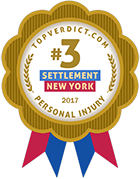Ready to Fight for You
Proving Slip-And-Fall Cases During Icy Conditions
Winter is here, and pedestrians have an increased risk of slipping on ice. According to the National Floor Safety Institute, falls are the leading cause of emergency room visits in the US.
Unfortunately, proving a slip-and-fall case is not always easy. To demonstrate the owner’s negligence, several things must be true.
Actual knowledge
First, you must prove that the owner knew about the dangerous condition. This is relatively simple in the case of a snow or ice storm. However, the difficult part comes with proving the defendant did not remedy the problem promptly. You cannot hold the owner responsible for your safety if you slip and fall in front of a storefront during a snowstorm. Owners are not responsible for clearing icy conditions until after a storm ends.
Failure to remedy
A reasonable amount of time must pass after the snow or ice stops forming before the owner becomes negligent. In most cases, this is very difficult to prove, and there is no objective measurement that courts will use. However, it might be easier to establish a premises liability case if the owner attempted to remedy the danger and did a poor job. For example, after a snowstorm, the owner might shovel their storefront but do such a poor job that the threat still exists. Your subsequent slip and fall on the poorly shoveled sidewalk indicate that the owner knew about the danger but did not remedy the situation appropriately.
Hurting yourself because of a poorly maintained property might lead to months of recovery and devastating medical bills. Look into your ability to pursue a slip-and-fall claim.
How Can We Help You?
Fields marked with an * are required
"*" indicates required fields




